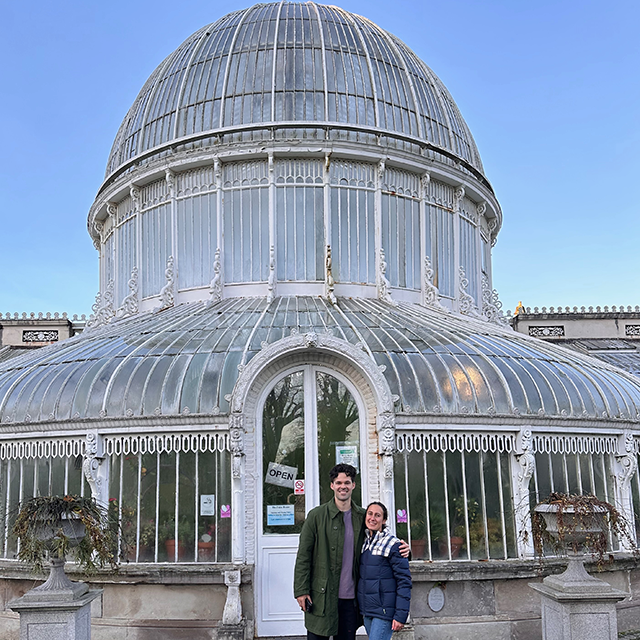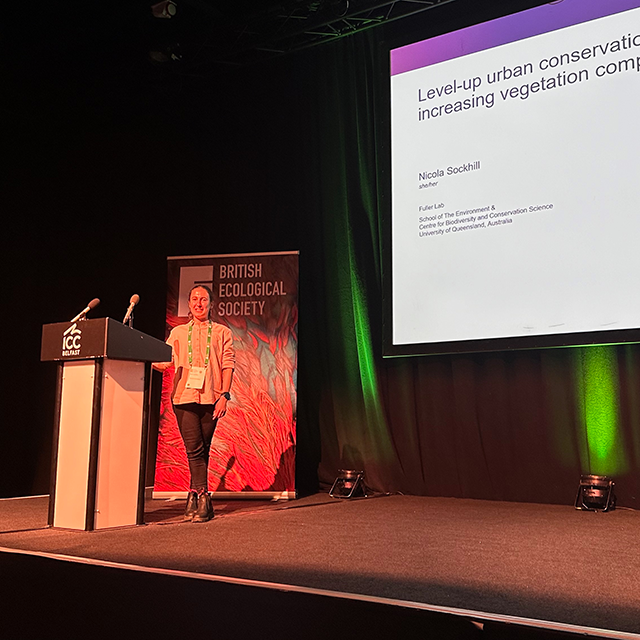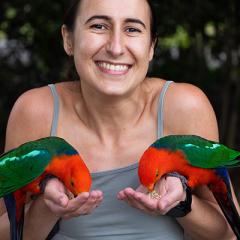Overwhelming opportunities
The conference was held just before the end of the working year; you can imagine the energy of a conference centre full of intellectually stimulated ecologists also excited to imminently knock off for the year. There were overwhelming opportunities to make new friends, attend end-of-year celebrations and, of course, share ecological ideas. Most attendees were from Europe, with some from other places farther away, including only a few from Australia and just two from UQ!
My research focuses on how different design features and other variables influence biodiversity in urban greenspaces, so the BES conference was a perfect opportunity to show this work to researchers in my specific field. It was exciting to meet other urban ecologists, especially those who use similar types of data to conduct their research.

Photo credit: Nicola Sockhill
Birds and humans
I presented in the Nature and Humans: Urban Systems session, and discussed my work investigating how vegetation complexity drives bird species richness. Ironically, the city of Belfast had very little vegetation (or complexity) especially in the middle of winter, and I only saw about 10 bird species, amusingly validating my findings in a very disparate environment to Brisbane! Nevertheless, Belfast was a great city to explore for a few days.
This trip also gave me a great excuse to travel and network with researchers across the country. In addition to the conference itself, I toured around the UK visiting places like London, Nottingham and St Andrews to meet various colleagues and present my work. I also snuck in quite a bit of birding (although unfortunately only got nice photos of domesticated ducks and geese, despite seeing 100 bird species on the trip)!
I very much appreciate my funders; I truly could not have attended without CSIRO, the Fuller lab, the School of the Environment and Birds Queensland.

Photo credit: Nicola Sockhill
Read more of these stories in Issue 17 of the CBCS Newsletter and follow us on X (Twitter) and LinkedIn.

